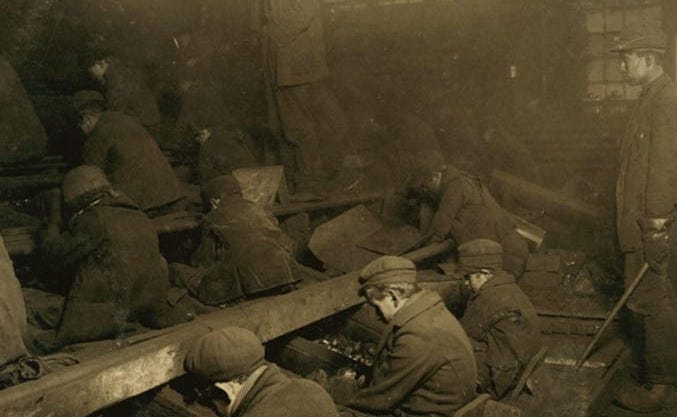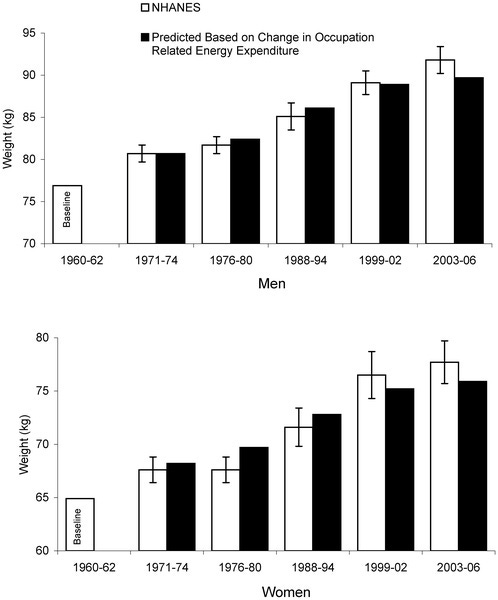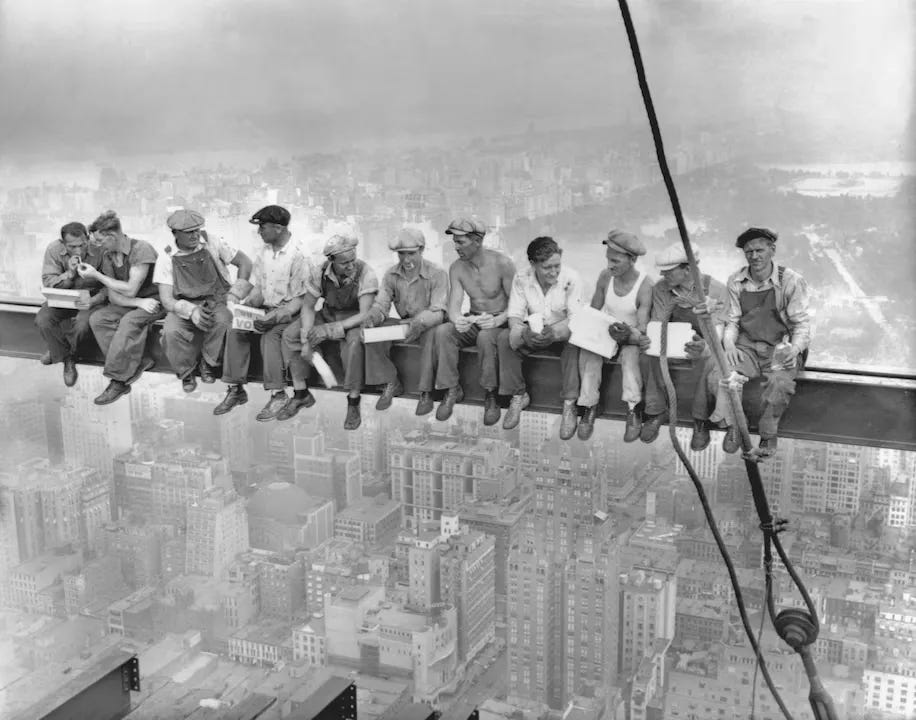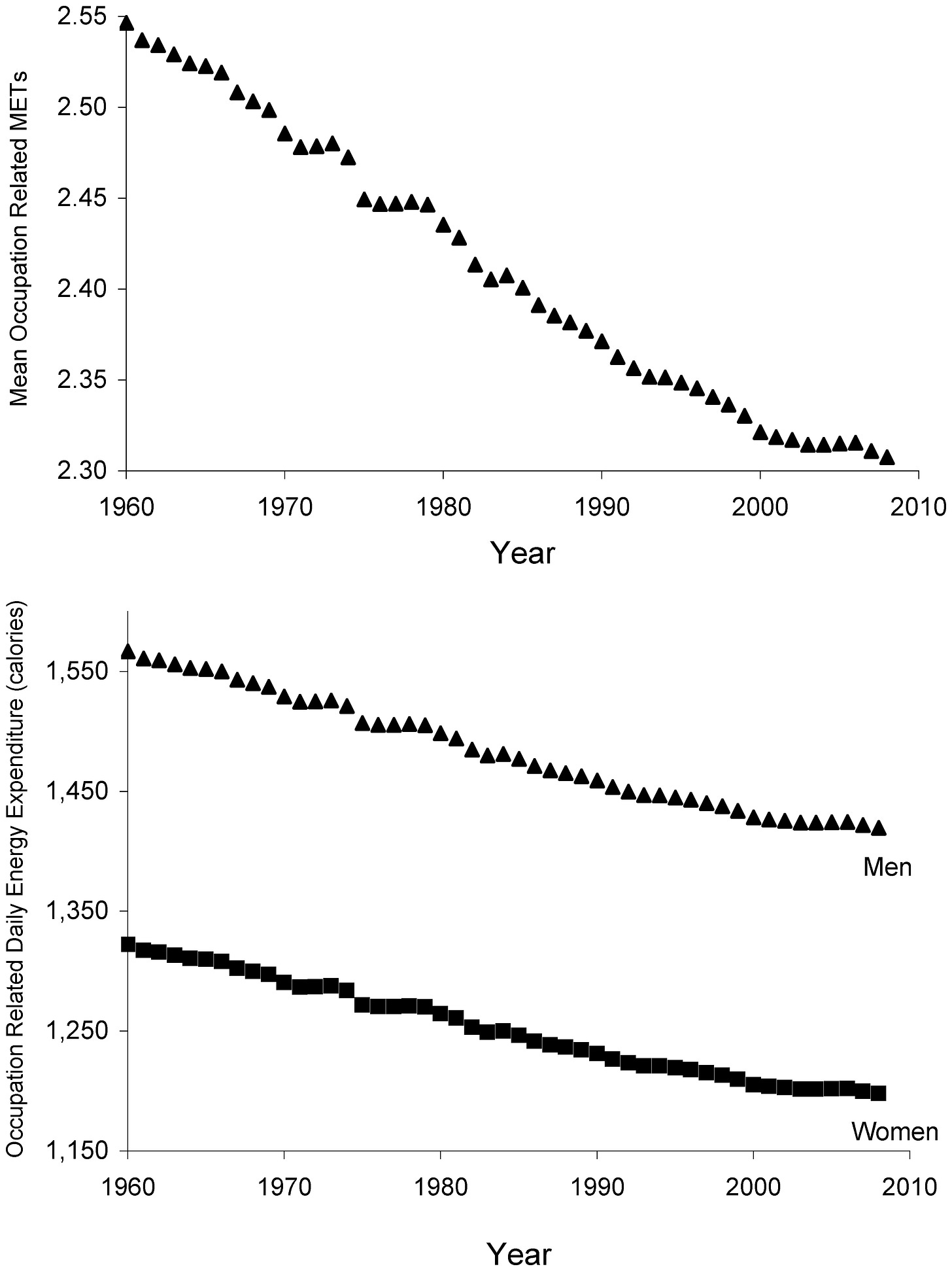Why we burn 142 fewer calories a day
Put labor back into Labor Day
Post summary
Labor Day celebrates the American Labor Movement, which made our jobs much safer and fairer.
Today our jobs pose new dangers—they harm our health in different ways. There is a simple solution.
In this classic Two Percent post, which I update every Labor Day, you’ll learn:
The shocking numbers around how our new style of work has impacted our metabolic health and weight.
Why “exercise” has failed us in some ways.
Nine things you can do to fight back against the downsides of modern jobs.
A call to action this Labor Day.
Housekeeping
This post is free and fully accessible to all subscribers (Monday Two Percent posts are always free).
But only Members get full-access to our Wednesday and Friday posts and their audio version. Become a Member of Two Percent:
ICYMI:
On Wednesday, we ran an important post covering why the modern approach to exercise may set us up for brain-related diseases, and five ways you can fight back.
On Friday, we ran the best financial advice I ever got. It’s profane. It’s offensive. It changed my life.
Thanks to our partners:
Function Health offers 5x deeper insights into your health than typical bloodwork. They’re offering a $100 discount right now. Head to my landing page functionhealth.com/michaeleaster to sign up with your credit applied.
Maui Nui harvests the healthiest protein on planet earth: wild (and invasive) axis deer on Maui. The nutritional value of axis deer is incredible. My go to: The 90/10 stick. Head to mauinuivenison.com/lp/EASTER to secure access.
Momentous made me feel good about supplements again. They’re trusted by pro sports teams, the U.S. military—and Two Percent. My picks: Essential Plant Protein + Creatine. Use discount code EASTER for 35% off.
Audio/podcast version
The post
Labor Day isn’t just a Monday set aside to send out summer with one final barbecue. It celebrates the American Labor Movement and the sweat and grit of the American workers who built this country—our skyscrapers, railroads, interstates, cars, and everything in between.
It’s a good day to consider how our jobs have changed: What work was like, what happened, what work is like now—and how that’s impacted us.
You’re less likely to die on the job
Section summary: The American Labor Movement organized to secure workers fair pay and hours, and safer work conditions.
In the late 1800s, the Industrial Revolution was in full swing. It shifted American workers from agricultural field work into factories, mills, and mines.
These jobs were physically demanding. Our workers put in 12-hour days, six to seven days a week, and weren’t paid fairly. More importantly, the conditions were unsafe and unsanitary.
Meanwhile, factory owners were getting rich. So the American Labor Movement organized workers to protest and change this.
Over time, it worked. The movement helped to make workers much safer.
For example, here’s how deaths in the mining industry have changed:
In 1913, the death rate of workers in industrial jobs in the U.S. was 61 deaths per 100,000 workers. By 1997, it was 4 per 100,000.
Some industries still have fatal injury rates. “Agriculture, forestry, fishing, and hunting” had a death rate of 19.5 per 100,000 workers1 in 2021. But the numbers are still multiples lower than they were around the turn of the century.
Other benefits of the American Labor Movement:
Pay increased.
We established the eight-hour workday and overtime pay.
We stopped employing kids!
In 1900, 1 in 5 American children worked. Today, employing kids gets you jail time.

The new dangers of work
Section summary: The amount of physical activity we do at work has dropped significantly since 1960. This correlates with the sharp increase in chronic disease.
Today, modern workers face new dangers. But these dangers aren’t as overt, like dangerous mines and machines. They’re unseen and insidious. They stem from how inactive our jobs have become.
The cubicle is the new coal mine:
Just 13% of jobs now require heavy labor.
The shift to desk work has led Americans to sit 50% more than in 1965.
Compared to the average desk job, work that requires hard labor (e.g., carpentry or millwork) burns between 3 and 5.5 times more calories across a day.
In 2011, scientists at Pennington Biomedical Research Center, a top health research facility, wondered how changes in work since the 1960s have impacted our health and waistlines.
They pulled 50 years of data from the Bureau of Labor Statistics.
Each month, that department surveys businesses to gauge what jobs employees are performing—for example, pecking at keys or chopping at trees—their wages, hours, and more.
From there, the scientists compared the activity levels of our past jobs to our new ones (measured in METs).
The result2:
In the early 1960s, almost half of private industry occupations in the U.S. required at least moderate intensity physical activity and now less than 20% demand this level of activity.
We estimate that daily occupation-related energy expenditure has decreased by more than 100 calories in both women and men, and further, this reduction in occupational energy expenditure accounts for a large portion of the observed increase in mean U.S. weight over the last 5 decades.
The scientists determined that the average American burns an estimated 142 fewer calories per day at work compared to the early 1960s.
It even impacts us at home. After household appliances removed manual housework, the average person began burning roughly 2,500 fewer calories a week, according to researchers at the University of South Carolina3.
They believe that this adds to rising obesity and chronic disease. The average American man in the early 1960s weighed 166.3 pounds4. Now he weighs 198 pounds. That equates to a BMI of 25.3 versus 29.2. The trend for women is similar.
Here’s the data visualized:
This graph shows how “sedentary” and “light” work have increased. Meanwhile, we’ve experienced a sharp decrease in work requiring a moderate level of physical activity.
This graph shows how on-the-job effort and calorie burn has decreased since 1960
This shows changes in the weight of the average American man and woman since 1960.

Being “overweight” or “obese” by BMI standards doesn’t guarantee you’ll experience chronic disease. Everything from where you store the weight to what you eat to your life stress alters your risk profile. Read more about my thoughts on BMI here.
But being overweight or (especially) obese does increase your risk—I like to compare it to gambling with dice. Obesity loads the dice in favor of disease.
Exercise helps. But it doesn’t fix the issue.
Section summary: People who exercise but sit the rest of the day have a significantly higher risk of disease than those who exercise and are lightly active throughout the day.
Here’s a surprising finding: Exercise alone may not be enough to counter an inactive job.
One study5 found that people who worked out were far less likely to have heart disease and diabetes than sedentary people. Obviously!
But among the people who worked out, the ones who sat the rest of the day had a 65 percent higher risk of disease. Those who were generally active at other times of the day were the best off.
The fix is simple: Break up your bouts of sitting by being a Two Percenter. Find little opportunities to move more.
When you get the mail, do a lap around the block. Or two or three.
Walk while taking work calls instead of sitting.
Park in the farthest spot always.
Take the stairs.
Toss on a ruck when you do chores around the house or when you walk your dog.
Use a standing desk for a couple of hours a day. Standing alone doesn’t burn many calories. But fidgeting can—and people who stand tend to shift around and fidget more.
Have exercise snacks. Set a timer and every 30 or 60 minutes run in place, walk around, or do bodyweight exercises like squats.
Do walking meetings at your office. It also leads to better conversations and ideas.
Take breaks from work by going for a short walk rather than looking up stuff on your phone or computer (I’m guilty of grabbing my phone when I need a break!).
Today, put labor back into Labor Day
Here’s a proposal to celebrate the American workers who built this country: Put the labor back into Labor Day.
Before you barbecue today, do some hard labor. It could be a workout or a chore around the house you’ve been putting off.
But do it for 75 minutes. That’s the total amount of daily activity one large study6 found most offsets being sedentary.
What are you doing? Tell us in the comments.
Have fun, don’t die, and enjoy your laborious Labor Day.
-Michael
https://www.bls.gov/charts/census-of-fatal-occupational-injuries/number-and-rate-of-fatal-work-injuries-by-industry.htm
Church, T. S., Thomas, D. M., Tudor-Locke, C., Katzmarzyk, P. T., Earnest, C. P., Rodarte, R. Q., Martin, C. K., Blair, S. N., & Bouchard, C. (2011). Trends over 5 decades in U.S. occupation-related physical activity and their associations with obesity. PLoS ONE, 6(5), Article e19657.
Archer E, Shook RP, Thomas DM, Church TS, Katzmarzyk PT, Hébert JR, McIver KL, Hand GA, Lavie CJ, Blair SN. “45-Year Trends in Women's Use of Time and Household Management Energy Expenditure.” PLoS One. 2013;8(2):e56620; 2013 Feb 20.
Note that we’re also about an inch taller on average, mostly due to better access to nutrition. But this better access to nutrition has also led to overnutrition.
Ajufo, E., et al. (2024, November 16). Accelerometer-measured sedentary behavior and risk of future cardiovascular disease. Journal of the American College of Cardiology.
Does physical activity attenuate, or even eliminate, the detrimental association of sitting time with mortality? A harmonised meta-analysis of data from more than 1 million men and women; Ekelund, Ulf et al; The Lancet, Volume 388, Issue 10051, 1302 - 1310






Brisk walk for 66 minutes with my wife followed by 23 minutes of body and light weight routine. Then I emptied the dishwasher!
Of course now I am kicked back reading Substack and drinking coffee 🤷🏽♂️.
I just got finished with my training- 1hr 43min of walking, isometrics, Heavy Hands, etc. About 70 % of my 9000 steps a day. The other 30% will be spread throughout the evening with short walks, inside, about every hour. Since my hip surgery I have been diligent about walking to repair so of the damage of 2 years of inactivity. Lost ~30#s, mostly better eating habits and being active all day (still too much phone!). Today's political climate seem to want to return to the past of less employee's rights to cancel the gains over the last century. My wife doesn't exercise but she cleans, sews, cooks, works in the yard and is generally busy all day, so she gets her steps in daily.
I agree with comment about food supply. My parents were both normal weight and I don't remember any of their friends being obese. I think the ensuing generations were and are stuck in the distraction mode of TV, ads, then internet. It's easier to read about or watch activities, than actually participate. My children, ages 50 to 37, are active and keep their children active. I think we have to set an example(2%) that entices other to be active.
Happy Labor Day